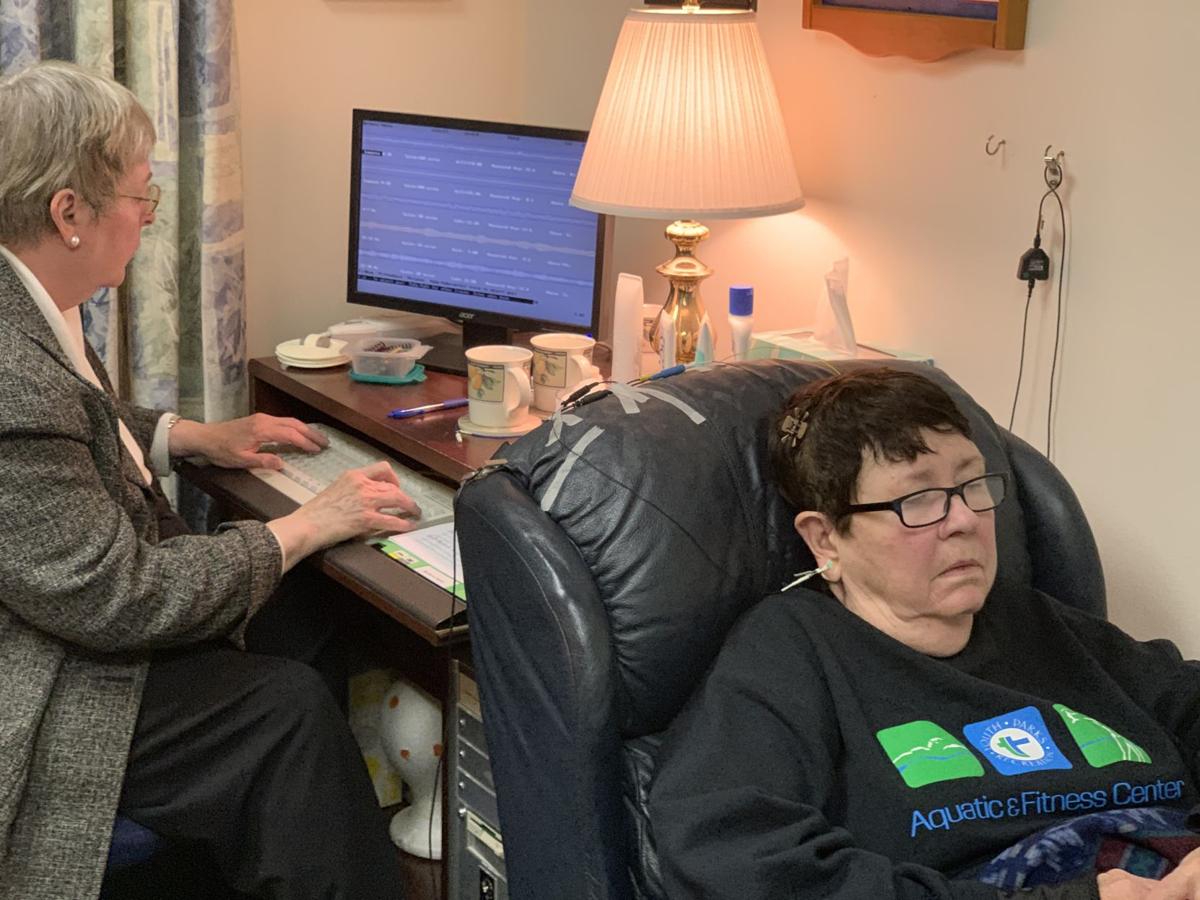Neurofeedback – which can help retrain the brain – traces its roots to the 1970s, when Dr. Barry Sterman, a neuroscientist at UCLA, developed it to help those with epilepsy reduce seizures and NASA astronauts to more comfortably re-enter Earth’s atmosphere.
Judy Chiswell had her first brush with the method in 1982, when workers for a Washington, D.C., company converting library book index cards from paper stock to electronic form were under a national contract to manage reams of information while making very, very few mistakes.
“I was focused on helping put the pieces back together for the people who were having stress-related disorders,” she said.
Chiswell, who grew up in Cheektowaga, has spent much of the last two decades running Hemispheres Neurofeedback Center for Peak Performance Training at 6511 Main St. in Amherst, which helps clients boost work and sports performance, and better manage a variety of health conditions.
“It helps me to focus on the now,” said Barb Henry, 76, a music teacher who has struggled with anxiety, depression and obsessive-compulsive disorder, particularly since her retirement about 15 years ago.
Chiswell holds a bachelor’s degree in occupational therapy from the University at Buffalo. She received a master’s in occupational and physical therapy, as well as a doctorate in cognitive psychology, from Boston University.
She worked across the nation during the 1980s and ’90s with neurofeedback pioneers, returning to the region in 1999 returning to the region in 1999 to care for her aging parents.
Chiswell has spent recent years balancing a job as a church secretary on weekday mornings and her business during afternoons and Saturdays.
Neurofeedback – which she also calls EEG biofeedback – helps boost brainpower through redundancy, something akin to making a grove deeper on a record album.
“The brain keeps reinforcing for itself what’s learned, but it does it better and better each time,” she said.
Chiswell recently demonstrated her technique by placing EEG sensors on Henry’s head and asking her to watch a game similar to Pac-Man on a computer screen. Special software gauged low-band, high-band and reward-band interference from brainwave signals that dictate eye movement and other sensory behavior.
“Any muscle tension in the face, the jaw, the neck, the shoulders will affect the EEG sensors,” Chiswell said.
The goal for Henry was to move the reward band, colored green, into a higher spot on the computer screen than the other readings.
“We want everything to be as relaxed as possible, to be as focused as possible,” Chiswell said. “Eventually, as the brain starts to get familiar with staying on the right frequency, the whole pattern begins to change, and the amount of work that it takes her to get the reward lessens.”
Within 20 minutes to a half-hour, clients usually go home feeling more focused and relaxed. They perform better and sleep better, she said.
“It’s not like a pill, though,” Chiswell said. “When you pop a pill you get a result. Then it fades and you have to take another pill. With neurofeedback, it’s cumulative.”
Chiswell has used neurofeedback on those with learning disorders, anxiety and panic attacks, stage fright and performance anxiety, peak performance, stroke recovery, headaches, eating disorders and minor traumatic brain injury. Call 601-9936 to learn more or schedule an appointment.
Initial consults take about two hours and cost $150. Treatments generally cost $50 to $100. Chiswell said it generally takes about 10 treatments to determine whether more will be useful.
This blog is a repost from: https://buffalonews.com/lifestyles/health-med-fit/neurofeedback-business-boosts-brainpower-for-performance-better-health/article_ca9262f1-87c9-54d3-a5ef-b44ec94b592f.html – All credit belongs to www.buffalonews.com and Scott Scanlon.

